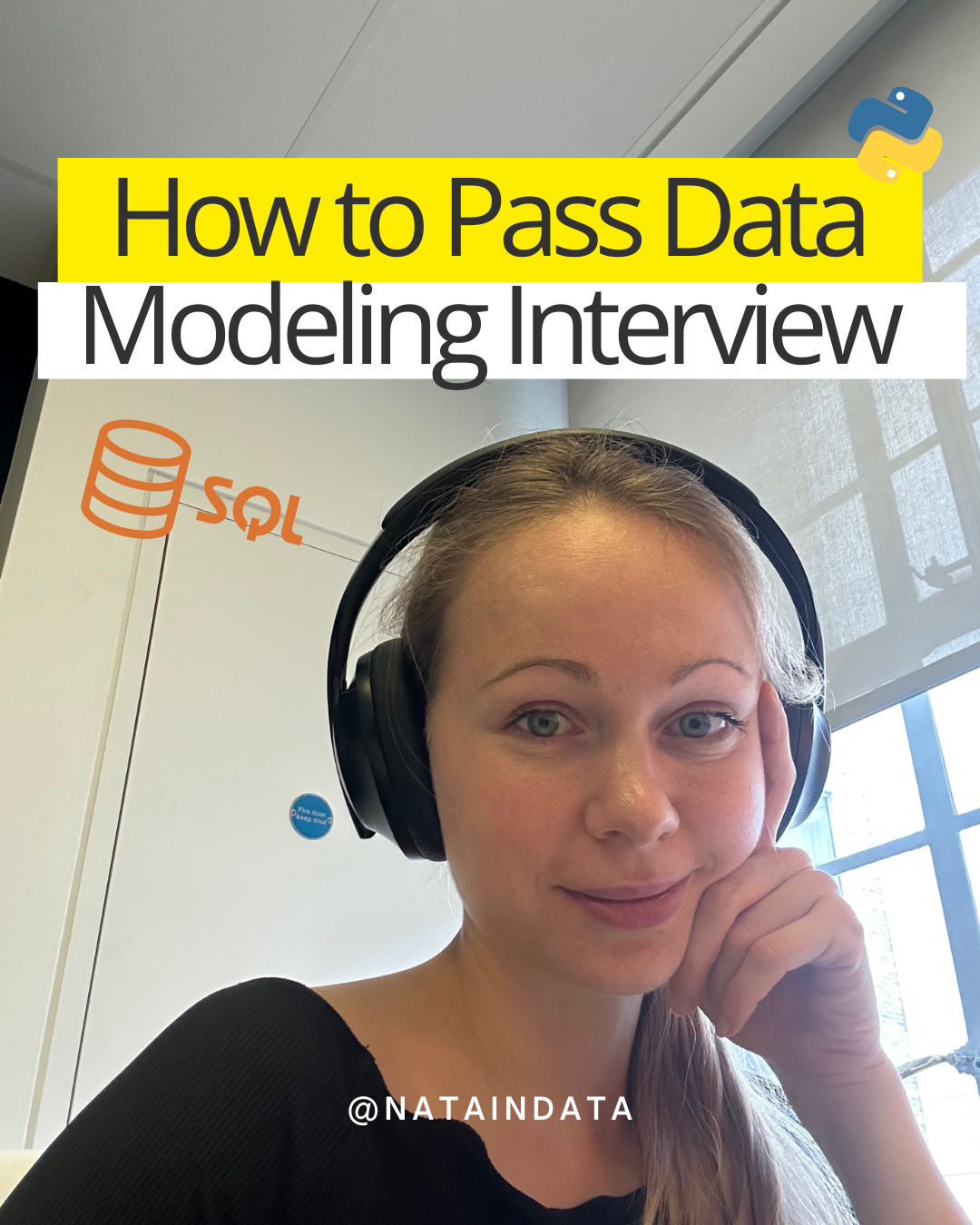How to Pass Your Data Modeling Interview

The biggest mistake in a data modeling interview is to flex every design pattern you know.
Yes, there are fancy modeling techniques, but that is not how you pass an interview.
Do you want to know how you actually pass a data modeling interview? Here's how.
Step 1: Play Interrogator
- What is the business context?
- E-commerce, streaming, social media?
- What are the key metrics they need to track?
- What's the data volume and velocity?
- Who are the end users - analysts, data scientists, or business users?
- What tools will query this model - Tableau, Python, or raw SQL?
- What's the query latency requirement - sub-second or overnight batch is fine?
Ask a lot of questions. The devil is in the details.
Step 2: Design the SIMPLEST model that fits the requirements
No. I said simplest.
Snowflake schemas are cool, but do you need 47 dimension tables?
How do you know what level of normalization you need?
👍 Here is the rule of thumb:
If it's for analytical queries with lots of aggregations, go dimensional - star schema is your friend, not your enemy.
If it's for an operational system with lots of updates, normalize to 3NF.
If it's for data science workloads, denormalize like your life depends on it - they want wide tables with 500 columns, give them their monster.
And repeat the mantra: "We can start simple and evolve based on actual usage patterns."
Interviewers eat this up like free pizza at a hackaton.
Step 3: Performance, damn it!
At scale, you need to think beyond the pretty diagram.
Mention partitioning strategies - by date for time-series data, by region for geographic distribution, by user_id if you're feeling spicy.
Talk about indexing - primary keys, foreign keys, and columns used in WHERE clauses. No index = full table scan = I’m gonna be so sad.
Suggest materialized views for complex aggregations that run frequently.
And here's the magic phrase: "We'll need to profile actual query patterns before finalizing optimization strategies."
This shows you're data-driven, not just guessing like a fortune teller.
Step 4: Data quality and governance
"Tests are like vegetables - nobody wants them until something goes wrong."
Talk about constraints - NOT NULL, UNIQUE, CHECK constraints. Because garbage in, garbage out, garbage everywhere.
Mention audit columns. "Who did this?" is a question you WILL ask at 3 AM.
Discuss slowly changing dimensions if relevant - Type 1, Type 2, or hybrid.
Show them you know your Kimball from your Inmon.
And always, ALWAYS mention data lineage and documentation.
Step 5: Scalability and maintenance
Do not forget to mention how this model will evolve. Spoiler: it will. A lot.
Talk about versioning strategies - how to add columns without breaking 47 downstream dashboards.
Mention abstraction layers - raw, staging, and presentation layers.
What about archival strategies for historical data?
These questions show you're thinking beyond the honeymoon phase.
In conclusion
That's it. You've shown you can think systematically.
- Ask clarifying questions.
- Start simple.
- Consider performance.
- Don't forget governance.
- Plan for evolution.
And remember you’ve got this!
